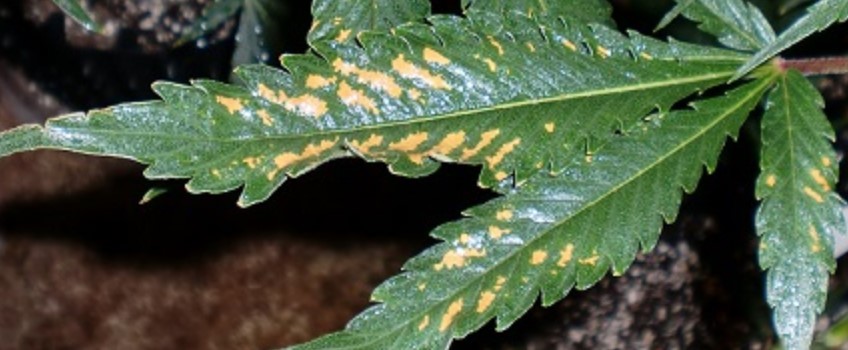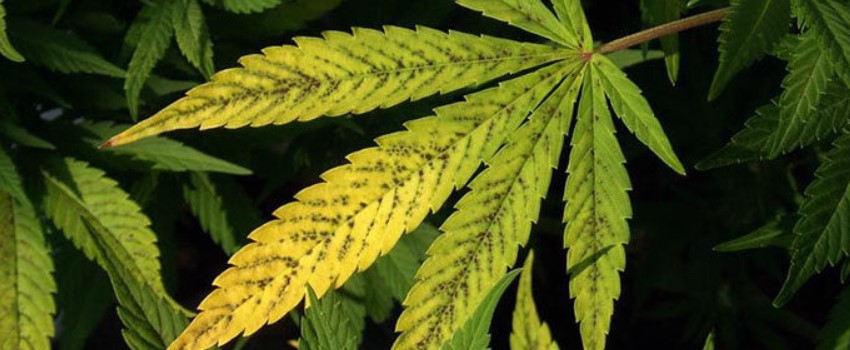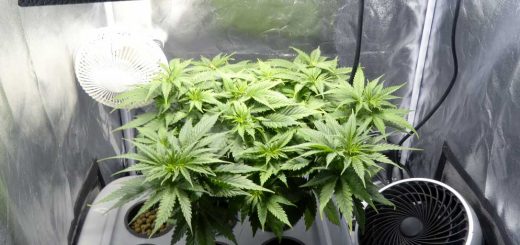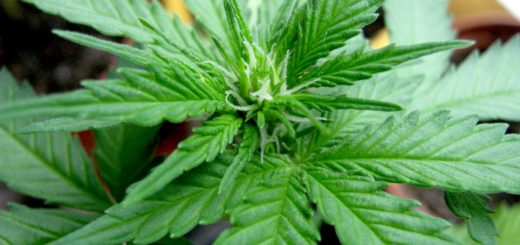Boron Deficiency, Treatment, and Prevention in Cannabis Plants – Bonza Blog
Boron Deficiency, Treatment, and Prevention in Cannabis Plants:
Providing essential care is necessary for the successful cultivation of cannabis. While at it, growers would love nothing more than to increase its flowers. As it turns out, one of the keys to achieving that is having an adequate amount of the micronutrient Boron.
Like other nutrients, Boron plays a role in the growth of cannabis. Among its numerous functions, one is to transport sugar (carbohydrates) to the root zone during photosynthesis. Another is to maintain the structural integrity of the cell walls as well as promote healthy metabolic pathways and plasma membrane.
Boron Deficiency

Boron Deficiency – Image powered by Ilovegrowingmarijuana.com
Fortunately, boron deficiency is rare. At times, some people may also confuse it with calcium deficiency.
If it does occur though, one of the likely culprits is not having proper pH level. Typically, soil-grown plants have a range of 6.0 to 6.5 pH; in hydroponics, it should be between 5.5 to 6.2 pH. Any deviation beyond the recommended spectrum results in the inefficient absorption of boron hence causing a deficiency.
Another possible culprit is the lack of moisture such as improper humidity level. It could be because the environment is remarkably arid or the grower not watering enough. Unless rectified, it compromises the ability of the plant to absorb nutrients including boron.
Signs of Boron Deficiency
If there appears to be something wrong, then there is something wrong. Often, the only way for growers to know there is a problem is when the signs start to show up.

Signs of Boron Deficiency – Image powered by Growweedeasy.com
1. Observe the new vegetative growth. If it appears twisted, burnt, and expands at a slower rate, it may be a sign of boron deficiency. Soon, this new growth dies and merely fall off. As lateral shoots appear, it looks gnarled and scorched. It can also curl and turn gray or brown.
2. Another sign to watch out for is if the new growth appears to be thick with the tips clustered. The lack of boron can prevent the leaves from expanding to the direction of the source of light. Instead of healthy growth, the plant may eventually sag and collapse due to a weak cell structure.
3. Because of the disruption to metabolic functions, the stems and branches appear soft and unhealthy. In some cases, it may also turn purple. These signs are a prelude to the main stalks and branches becoming brittle, and possibly hollow too.
The lack of carbohydrates reaching the root system wreaks havoc. It causes the main roots to die. Secondary roots, on the other hand, become stunted and swollen. As such, it becomes prone to root rot and different bacterial or fungal infections.
Rectifying Boron Deficiency
The timely manner in which growers recognize the signs of boron deficiency (and others for that matter) is critical to the survival of the affected plant. Applying the fix as early as possible, in most cases, solves the problem without compromising the quantity, quality, and potency of the flowers.
After determining the cause of the problem in the growth of the plant as a deficiency in boron, the fix is quite simple. All one needs is boric acid and water.

Rectifying Boron Deficiency – Image powered by Ilovegrowingmarijuana.com
Step 1. Mix 1 teaspoon of boric acid and 4 liters of water.
Step 2. Apply to the affected areas of the plant.
Step 3. Let the solution sit overnight. After, the improvements become noticeable. At this point, flush the plant with clean water. As an option, growers may also use a commercial cannabis tonic.
Preventing Boron Deficiency
Preventing is better than subjecting the plant to stress and the threat of dying. As alluded to, boron deficiency is not common, but it can happen. In most cases, the things growers need are pretty much the basics of caring for cannabis plants, so it is not an added burden.

Preventing Boron Deficiency – Image powered by Ilovegrowingmarijuana.com
1. Use a pH meter to test and ensure that the acidity falls within the recommended range.
2. Use a hygrometer. Typically, the moisture level is between 40% to 70% depending on the growth stage. However, anything less than 25% can cause boron deficiency.
3. Be sure not to under or over water the plants and keep the soil well-ventilated and drained.
4. Besides using the right cannabis fertilizer, it should also be in the right amount. Otherwise, it could lead to nutrient burn or lockout.
Adequate Boron Is the Key to More Cannabis Flowers
As a micronutrient, cannabis plants only use trace amounts of this mineral. Even so, it plays a vital role in the healthy growth of plants. It also works with other minerals such as calcium in synergy.
Although it is unlikely to happen, boron deficiency can pose a problem if it does occur. Fortunately, the signs are not difficult to see. If it were to occur, the fix is quick and quite efficient.
All growers need to do to avoid it from occurring is to be diligent. By carefully monitoring the environment as well as observing for any signs of trouble, there is no reason for the plant not to produce a bountiful yield. With the right amount of boron, growers can also expect optimal growth of flowers packed with THC.




Recent Comments